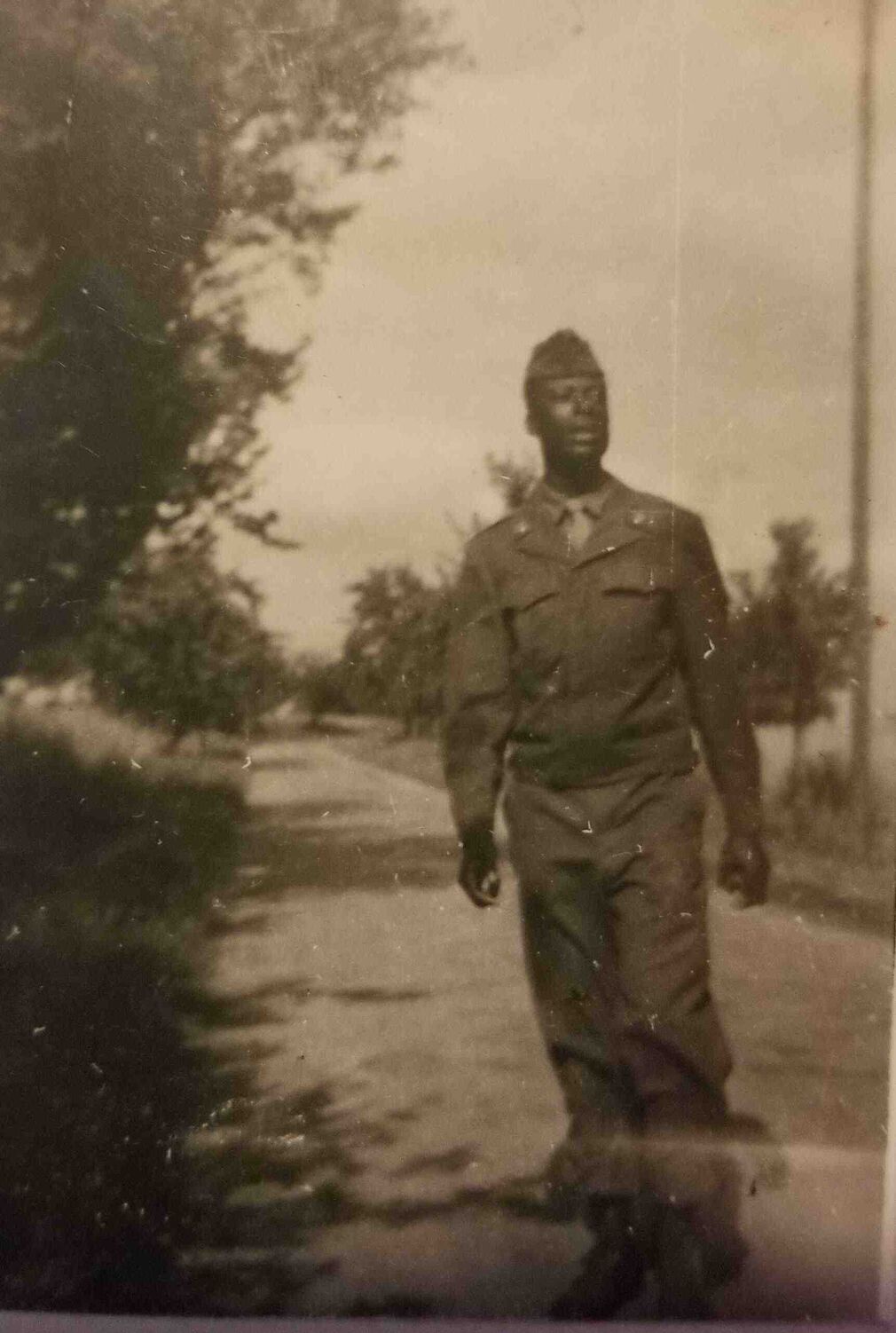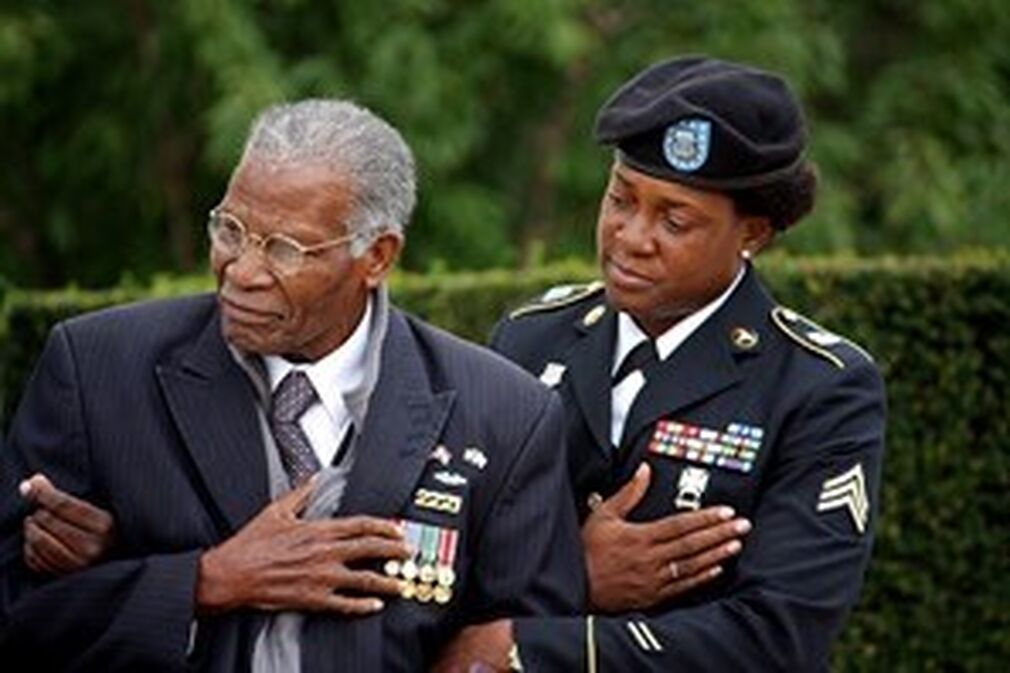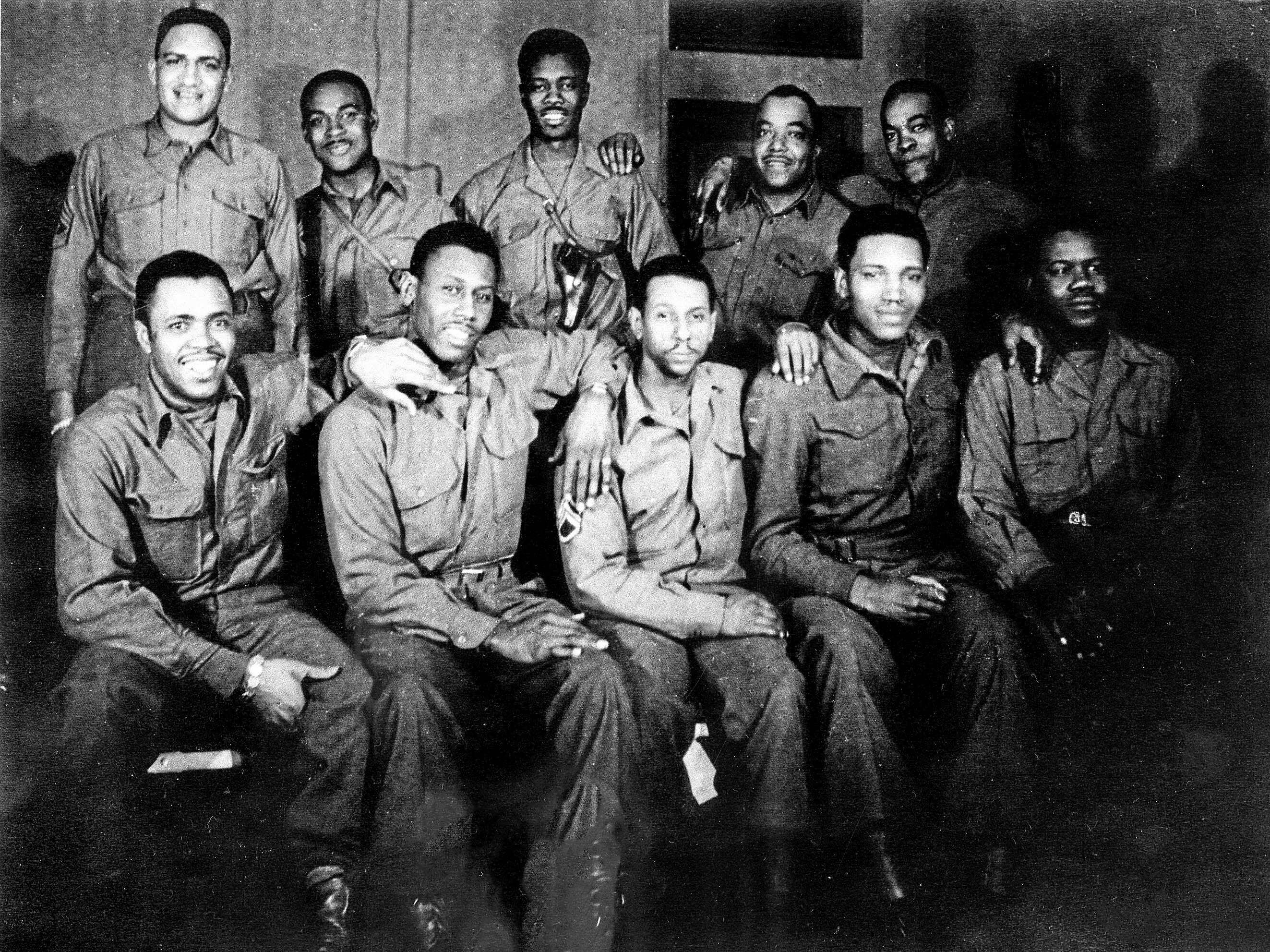World War II From a White Historical Perspective
American historians recorded the World War II events with only the faces of white American soldiers. In doing so, they did not write the history books correctly as in their minds, white soldiers won the war. Winston Churchill said in 1930, “history of a war is written by the victor.” However, the American military historians only described and wrote about the white combat troops and not about the support troops that made it possible for the war machine to operate. The combat units consisted almost entirely of white Americans, the service troops mainly of Black Americans.
about 900,000 African-Americans at home and abroad helped to liberate Europe
The average Dutch citizen knows the physical appearance of American soldiers only as the way books and films depict them. From the viewpoint of a white person. This viewpoint has always been the norm. The Dutch collective consciousness knew very little, until recently, about the 900,000 African-Americans who helped to liberate Europe – at home and abroad. Only recently Dutch Media reported about Black American soldiers and only after the year 2000 were there books published about Black Liberators.
During WW2 journalists accredited by the US Army were not allowed to report on the operations managed and performed by the black troops. Decades later, around the year 1990, this changed when the contributions of Black soldiers were officially recognized in the US. For the first time, seven African American veterans - 6 of them posthumous – were awarded with the MOH. They received this award in 1997 for their service during World War II in The White House by president Bill Clinton. Black American soldiers had received high awards for their service in previous American wars, but this stopped when new discriminatory procedures were mandated after 1945.
It was often the first time that white Dutch people had ever seen a person of color. Conversely, it was also the first time that Black Americans had been invited to white people's homes since the United States was segregated.
In some parts of the Netherlands, particularly Zuid Limburg (the South of the province Limburg), Black American soldiers were stationed in villages and towns. The soldiers were able to integrate and interact with the local residents who were very curious about them. It was often the first time that white Dutch people had ever seen a person of color. Conversely, it was also the first time that Black Americans had been invited to white people's homes since the United States was segregated.
The history project Heritage of the War (Eyewitness stories, Ministry of WVC 2008/09), chronicles the stories of the development of the American Military cemetery from end of 1944 on by locals who had interactions and relationships with the Black troops who were deployed in their region. The images that left indelible memories in the minds of the Zuid-Limburgers were of the Black gravediggers who buried the white American soldiers in the village of Margraten. Also recorded were accounts of Limburgers who met Black truck drivers from The Red Ball Express. These soldiers were responsible for managing and directing the large supply operations around the regions of border towns and Germany.
Upon returning to a strictly segregated America, the Black soldiers were not celebrated as heroes. As a result, many of their experiences in Europe went largely unrecorded. This can be do to various factors and raises the following questions. Were there enough Black historians to record their stories? Were their veteran organizations that represented the Black veterans? Were there Black and/or white media in the United States who wrote about the soldiers’ experiences? Was the social climate opened to learning about the experiences of the returning veterans who helped to liberate Europe?
Only a small number of the Black soldiers kept diaries about their time being stationed in Europe, as many of them were almost illiterate upon enlisting in the military. Luckily there were letters they had sent home
It is a fact that American history largely ignored the Black World War II veterans with some exceptions. One exception is the all Black unit of Tuskegee Airmen, later on another exception was the 784th All Black Tank Battalion. This battalion was involved in the liberation of the region around the Dutch towns Venlo. One of the veterans of this Tank Battalion, Dr. James Baldwin.
Other units were recognized later: The 761st All Black Tank Battalion - one unit of which temporarily stayed in Jabeek and Mheer, Zuid Limburg, only officially acknowledged in 2014. The story of The 320th Barrage Balloon Battalion that helped keep German aircraft at bay in Normandy did not appear until 2015 in a book (by Linda Hervieux).
Note: "All Black", because a battalion composed of Black and white was unthinkable at the time. The officers were white American soldiers. Finally, there were The 2221 Negro Infantry Volunteers. 32 of them found their final resting place at the American cemetery in Margraten.
The post-war euphoria and the reconstruction of our country have long maintained the existing image of the white GIs. This image was never challenged. In the Netherlands, the movie, “Saving Private Ryan” was received with great success without questioning the accuracy of events and the representations of the diverse military. The movie did not feature one Black soldier even though thousands of African Americans landed on the shores of Normandy. In fact, the majority of soldiers who prepared ‘Operation Overlord’ (the Battle of Normandy) in England were African Americans.
In 2009 at the D-Day celebration in Normandy, President Obama welcomed the Black WWII veterans, who were in attendance for the first time at the ceremony.
During the ceremony on Memorial Day 2015 at the American cemetery in Margraten, for the first time in 70 years, the then American Ambassador Timothy Broas spoke about the Black American gravediggers who buried the fallen American soldiers honored there. And he also greeted a number of those present, who, as children of Black liberators, were silent for 70 years about their biological fathers. Out of an estimated total of 10,000 Dutch liberation children, an estimated 70 children were born to an African American as father. The stories of 12 of them are recorded in the book “Children of Black Liberators” (Vantilt 2017).




